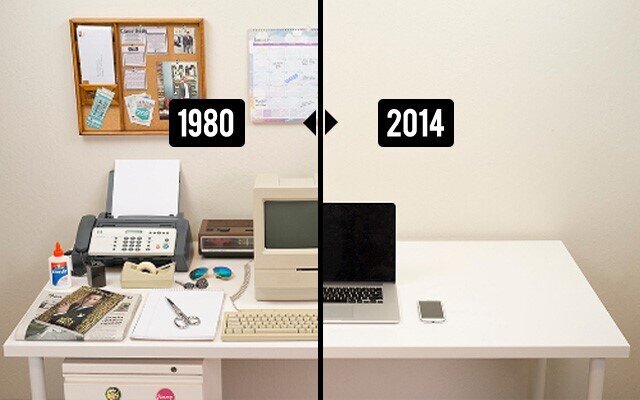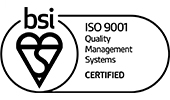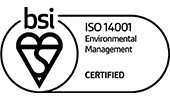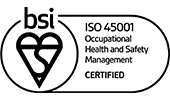Having just celebrated 25 years of providing office design and office fit-out solutions to businesses across the UK, we’re feeling a bit nostalgic, especially after we saw this video by the Harvard Innovation Lab: (click below to see it)
Produced by BestReviews.com, ‘Evolution of the Desk’ shows the rather drastic way that the workspace has changed since the 1980s. It’s probably fair to say that the final example is a little too minimal even for our taste, but it proves that the way we use modern office furniture has definitely changed. Since everything migrated to a virtual desktop, physical desks have a lot less to cope with today.
We decided to take a look how things have changed since Paramount launched in 1989.
We realise that we might make the past sound a bit like George Orwell’s ‘1984’, and not everyone’s office was quite as grey and sterile as this, but if you listen to some of the comments from the teens that we interviewed for our ‘Future Workers’ video, the perception of the boring, lifeless workplace is still alive and well. Thankfully, the reality of modern office design is a lot less bleak!
Office Design
The Cubicled Past
From the 1970’s through to the 1990’s the use of ‘systems furniture’ grew, exemplified by the ‘office cubicle’ layout. While the original intention was never to compress as many office workers as possible into a space, this is precisely what they started to be used for.
The responsibility for the design and maintenance of an office often fell to facilities managers whose focus was on improving efficiency across the business. This was much easier when it came to systems like HVAC (heating, ventilation and air conditioning) but when the same approach was taken with office design and the way that people worked in it, the end result was sometimes an exercise in how many people you could fit into the least amount of space. Hence, the typical ‘cubicle farm’ office design, where straight lines of cubes were seen as the most efficient placement of furniture, connecting staff virtually rather than physically so that they could email and call each other instead of meeting in person.

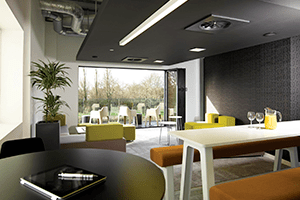
The Flexible Present
Today, things are different. Office design needs to be adaptable and mobile enough to encourage collaboration and promote the integration of teams and departments made up of multiple generations. Traditionalists, Baby Boomers, Generation X, Generation Y, (the Millennials), and the impending Generation Z all have their own ideas of what they want from their office space, with younger workers requiring a lot more flexibility.
The so-called ‘open office’ is only one answer, and a divisive one for many people. A lot of companies are now recognising choosing an ‘activity based solution’. This gives employees a number of different options within the workplace, from enclosed rooms for private meetings and quiet, contemplative working to open, informal breakout areas that encourage chance encounters and socialising. This allows staff to choose the space that best suits their current activity, project or meeting.
Office Furniture
The Cookie-Cutter Past
In the 1980’s, profit-hungry businesses saw the rewards gained from squeezing as many employees into a space as possible, which resulted in building block style workstations. Standardised desks, chairs and storage units were cheap to buy in bulk and perceived to showcase a minimal, consistent identity for an office space. Clearly it allowed for very little imagination or personality to come across and the offices of any two businesses from the period would probably be all but indistinguishable.
This generic approach to office furniture also meant that things like comfort and posture weren’t really a consideration.
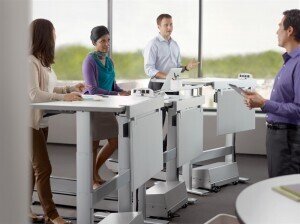

The Comfier Present
A chair is still a chair and a desk is still a desk so physically modern office furniture hasn’t changed massively in the last 25 years. We’re not floating around on electromagnetic bean bags, but in terms of ergonomic design, new materials, and research into how furniture can have a positive effect, it’s changed considerably.
Employees are now more aware about the harmful effects of sitting down all day and modern office furniture is being designed specifically to ensure that staff can keep as active as possible, from height-adjustable desks to treadmill workstations and even workout machines for under your desk.
Office Technology
The Cabled Past
It goes without saying that the birth of the PC has reshaped the office more than any other innovation. PC sales tripled in the late 80’s and advances in technology since then have been stratospheric and far reaching. It’s hard to imagine an office where information would need to be physically stored to the extent that it used to be. Technology certainly started to tidy up the office from the 80s onwards.
This was also evident in office design. Systems furniture was made to be tech-friendly, with cubicles wired for phones, internet, fax and other gadgets. Unfortunately this also created an introverted workforce where face-to-face interaction occurred less frequently.
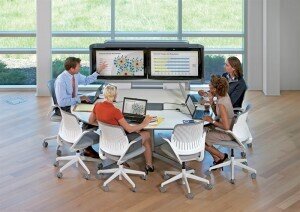
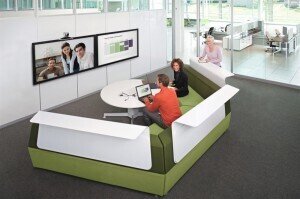
The Wireless Present
Technology continues to change and evolve at an alarming speed, and the virtual world is an intrinsic part of our life both in and out of the office. While virtual interaction is still a mainstay of the working day, from video conferencing and meetings via online portals to the good old email conversation, mobile and wireless technology has freed us from the cabled confines of a cubicle or meeting room. Laptops, tablets, mobile phones and smartphones are now multimedia mobile terminals, accompany this with high speed, wireless internet connection and the workplace is no longer limited to a physical space, it’s a superconnected network of individuals who work where they feel most comfortable.
Over the last quarter of a century the workplace has seen many changes, but keeping the needs of a business at the forefront of office design will always be vital. Not only the number of desks needed and where should go but also how you want your staff to use the space most effectively, keeping them happy, motivated and stimulated.
Over the next 25 years, no matter how much technology might change, that’s the one thing that will always remain the same.
Written by Helen Bartlett, Design Manager

